NatureZen: Hawk Love
words and photos by Melissa McMasters
I often say that next to spring (the undisputed champion), winter is my favorite time to be a birder. The leafless trees make birds much easier to see, and we get to spend leisurely time with our local residents while their pace isn’t as frenetic as it is during breeding season. Sometimes, as with charismatic large birds like hawks, we get lucky and start to recognize individual birds. That’s what happened for me this winter at Shelby Farms Park.
I first noticed this red-tailed hawk in November in the place I like to walk regularly. It was getting dive-bombed by a pesky mockingbird, but refused to give up its perch. The next day, I came back with friends and the same little drama was playing out. I quite enjoyed seeing the hawk looking back at the mockingbird in annoyance.
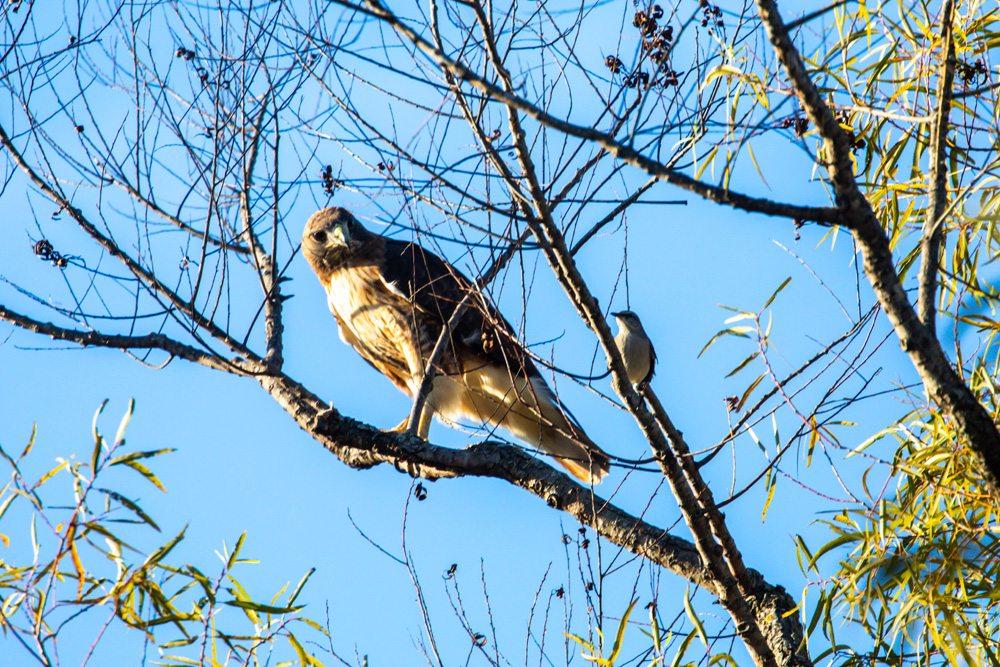
Why doesn’t the hawk just eat the mockingbird? Heavy Buteo hawks like red-taileds and red-shouldereds don’t generally have the agility of smaller hawks in the Accipiter genus, like the Cooper’s hawks that menace backyard bird feeders. For a red-tailed hawk to catch a mockingbird, it would have to launch a high-speed sneak attack…but it’s likelier that it would just eat the mockingbird’s eggs for a snack. This time of year, though, the mockingbird doesn’t have a nest to chase the hawk away from, so it’s just taunting the hawk in hopes that it will go away. (This has not worked. It has merely resulted in a lot of stink-eye.)
Red-tailed hawks have short, broad tails and broad wings, which makes them skilled at catching thermal pockets of air that lift them up and allow to them to soar without expending a great deal of energy. What those features don’t make them is fast. So when smaller birds like these red-winged blackbirds mob them in the air, they more or less have to put up with the abuse!

One thing I quickly noticed about this particular hawk is that it was quite playful. On several occasions, I watched it forego a sturdy limb in favor of balancing (and re-balancing) on small branches. Then it would sway back and forth in the wind. Even when not soaring, this bird loves to catch a breeze.
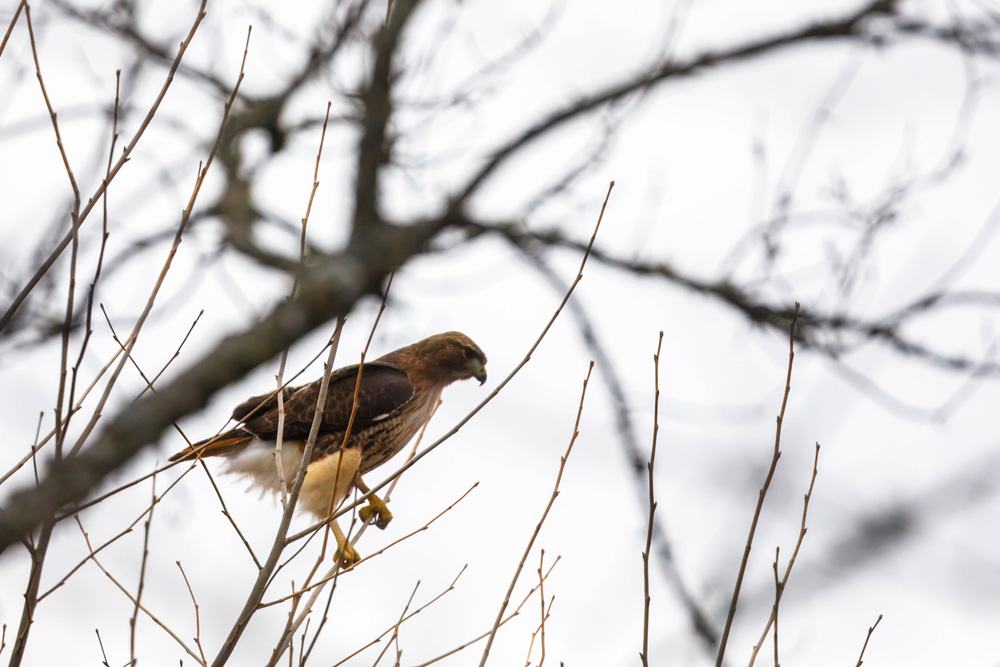
One day as I watched this balancing act, I realized I was looking at a different hawk. The hawk in the photos above is an adult, with dark eyes and more reddish chest feathers. The one in the photo below is younger, with yellow eyes and a white chest (with the signature “belly band” of dark feathers visible in many red-tailed hawks).
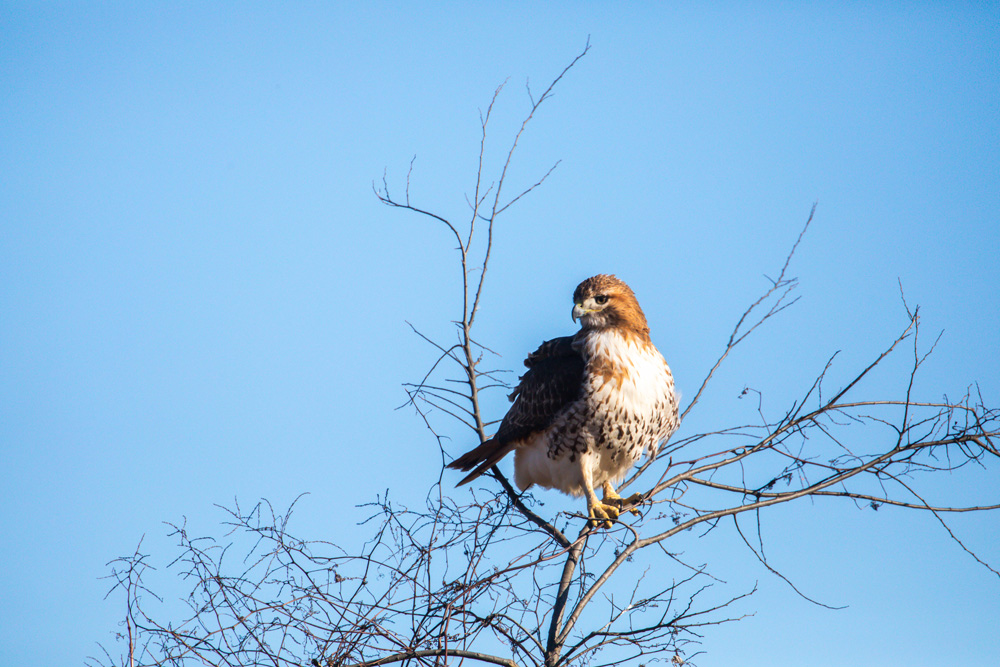
I soon realized this youngster’s goofy spirit extended beyond challenging its perching ability. One day as I walked down the trail after having seen no birds at all, this hawk plunged down right in front of me on the other side of some grass. It was one of January’s bitterly cold days, with snow still on the ground, and small pools of slushy water. I wondered if the hawk had caught something, but in fact it was just bouncing around in the icy puddles.
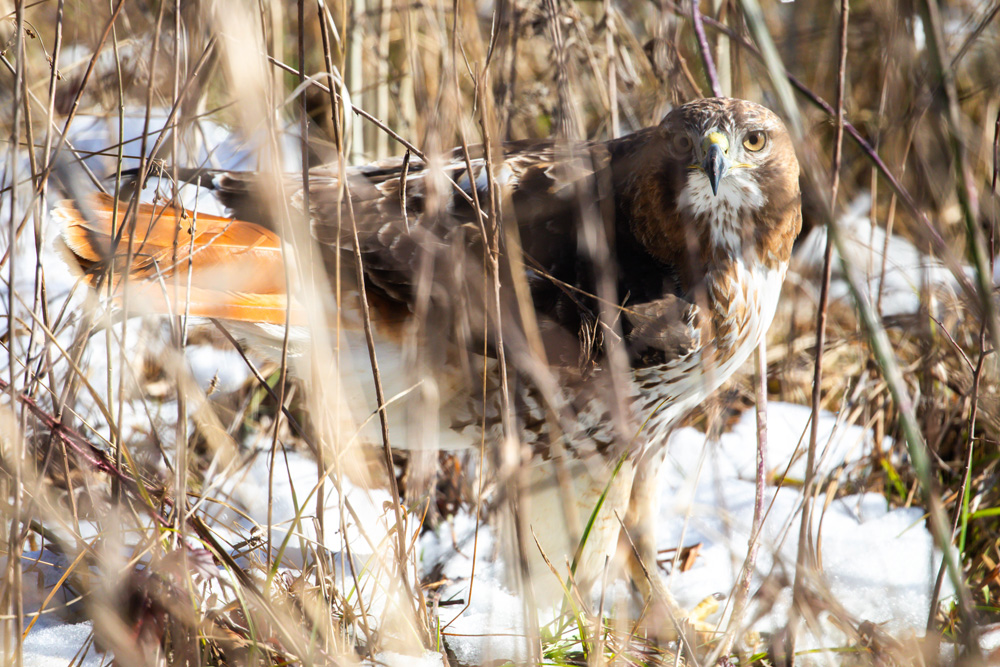
A good look at this hawk revealed that though it still had some immature plumage, its tail had already molted into the shade of red exhibited by adults. Most red-tailed hawks spend their first two winters with brown striped tails, and start to produce those red tail feathers the spring they turn two years old. So perhaps it wasn’t so young after all.
One thing I appreciated about the younger hawk is that on a breezy day, its head feathers often made it appear like it was wearing a crown.
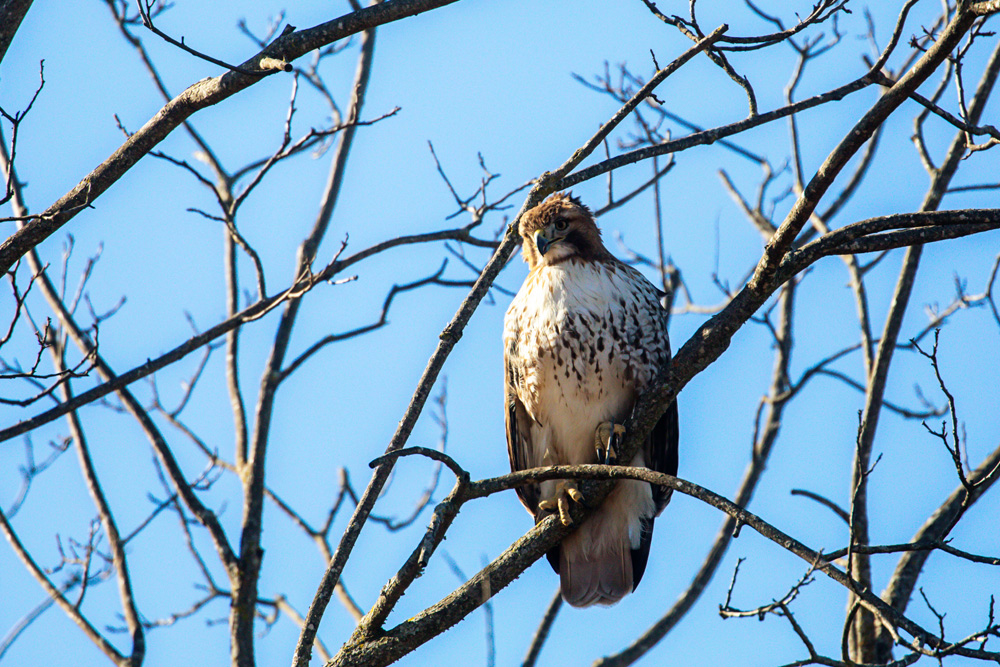
One day at the end of January, I caught a distant glimpse of a hawk on a small branch. As I looked closer, I saw that there were two! Is it possible that my two silly hawks, with their love of small-branch teetering, had found each other?
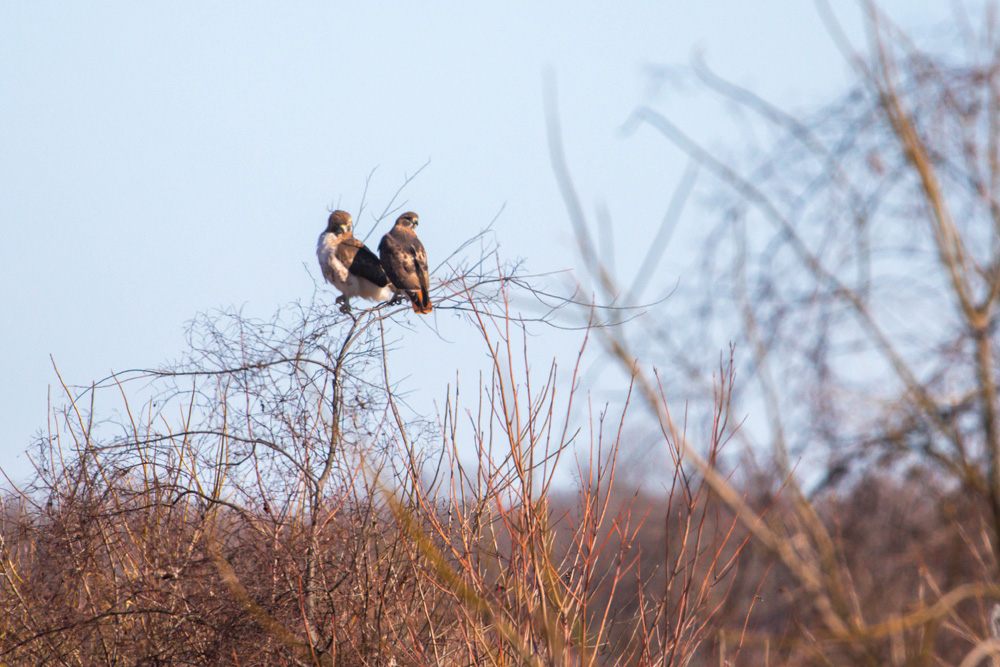
My question was answered definitively a couple of weeks ago, when I was watching the younger hawk and the older one suddenly flew into frame! At first I thought they might be parent and child, but as we studied these photos back at the Overton Park Conservancy office, Fields suggested that they were likely a pair. The younger one’s tail was already red, after all, which suggested that it was mature enough to breed. It’s also the start of nesting season for hawks, so there’s every reason for a mated pair to be hanging out together, and very little for an adult to be minding last year’s young. And red-tailed hawks are incredibly variable, such that it wouldn’t be that unusual for a bird to molt into adult tail plumage while still displaying pale eyes and a white chest. The bird on the top is almost certainly older than three years, while the bird on the bottom is almost certainly younger, but beyond that we’ll never know!
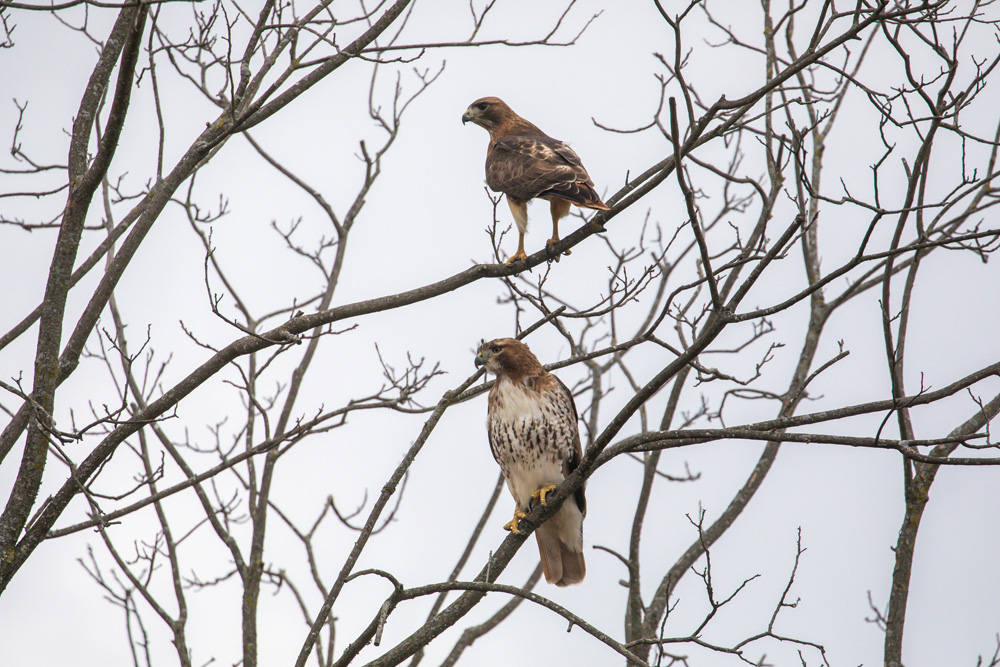
We guessed that the older hawk was a male because he’s smaller in size, which is generally the case in birds of prey. This is different than almost all other bird families, and indeed the animal kingdom in general, and no one yet knows why. One theory is that because raptors have to spend so much time incubating their eggs (28-35 days, compared with 12-13 for those mockingbirds that harass them), having the parent that spends the most time on the nest be larger provides them with better protection.
Red-tailed hawks are largely monogamous and stay together in the same territory for years, so I hope to keep watching these two for a long time to come. I haven’t spotted their nest yet, but I hope their adventures will continue and I’ll get to see their descendants one day soon!



